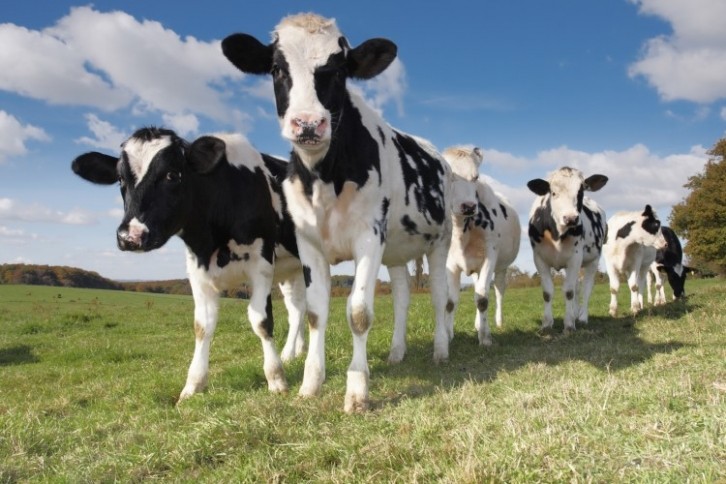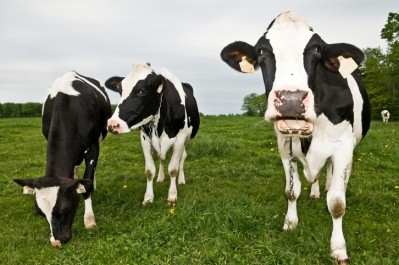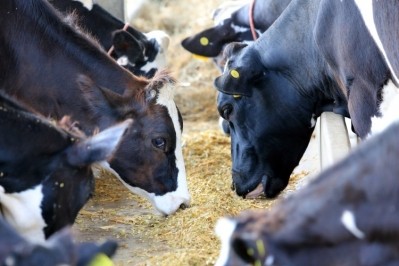Research sheds light on liver abscess formation in Holstein cattle

Liver abscesses in cattle is a medical condition that costs producers $400m annually, yet is difficult to diagnose until harvest. Cattle that have the condition rarely exhibit symptoms, and when they do, these are fairly generic, ranging from decreased feed intake to a painful rib cage. Dairy-reared cattle are affected by the condition more frequently compared to other rearing methods; for meat producers, liver abscesses are a major economic liability and is currently being treated preventatively through in-feed antibiotics.
While science hasn’t identified a singular cause, researchers think the infection is triggered by acidosis – a build-up of acid in the body fluids – that compromises the protective tissue lining the organ, allowing pathogenic bacteria to invade. Acidosis can occur However, the exact mechanism of the disease has been difficult to confirm and study, as liver abscesses are difficult to induce experimentally.
But a group of US scientists from the USDA’s Agricultural Research Service (ARS), Texas Tech University, Kansas State University and West Texas A&M University think they have created a model that would allow them to study the condition and learn what causes it.
In a study published in the Journal of Animal Science (see sources below for more information), the researchers used 40 dairy and dairy-beef Holstein calves placed on experimental diets - a low-starch control diet (13 calves), a rotation of high-starch acidotic diet for three days, then a switch to a low-starch diet (13 calves), and a third group of 14 calves that would later be intraruminally inoculated with three LA-casuing bacteria - F. necrophorum, T. pyogenes and Salmonella Lubbock. The goal of the acidotic diet was to decrease ruminal pH and cause rumenitis, which is involved in the formation of the liver infection, while the rotational nature of the diet was implemented to prevent the rumen from adapting to a low pH.
‘Potential synergism’ indicated by bacterial interactions
The researchers measured the ratio of feed disappearance, ruminal pH changes, changes in the blood, and signs for liver abscesses. No abscesses were found in the control group and the steers that were fed the acidotic diet - but among the cattle that received bacterial inoculation, only two animals did not develop visible symptoms, with 6 developing abscesses.
The researchers also found that the bacteria associated with abscesses may travel from other organs, such as the lower gastrointestinal tract; and in other cases, when these bacteria were not found in the rumen, no liver abscesses were detected.
“We were successful in inducing [liver abscesses] in 6 of 14 (42.9%) steers challenged with an acidotic diet followed by intraruminal bacterial inoculation,” the researchers said. The model better mimics real-world disease etiology, the authors added, and the way the bacteria is administered is less invasive than portal vein catheterization or injection.
“Our data suggest that acidotic diet challenges in conjunction with intraruminal inoculation with F. necrophorum, T. pyogenes, and Salmonella Lubbock were able to induce LA in weaned Holstein steers,” the authors concluded. “The acidotic diet alone caused steers to spend extended periods of time with ruminal pH below 5.6, indicative of subacute ruminal acidosis,…, but intraruminal inoculation F. necrophorum and T. pyogenes had a compounding effect on rumen epithelial damage.
“The addition of Salmonella Lubbock to F. necrophorum and T. pyogenes to induce [liver abscess] is a novel approach and indicates potential synergism with F. necrophorum as these bacteria were isolated from 57% of the [liver abscesses].
Additional studies must be carried out to confirm this interaction, the researchers added, and to determine if the model can be used again to induce the condition.
“However, if repeatable, this model may serve as a foundation for testing prevention and mitigation strategies and provide further understanding of disease etiology and potential predictive biomarkers.”
Source:
Development of an experimental model for liver abscess induction in Holstein steers using an acidotic diet challenge and bacterial inoculation
Paul R Broadway, et al
Published: Journal of Animal Science, Volume 102, 6 March 2024
DOI: 10.1093/jas/skae046











